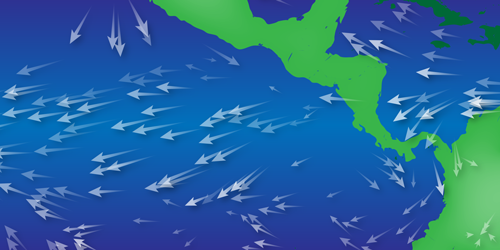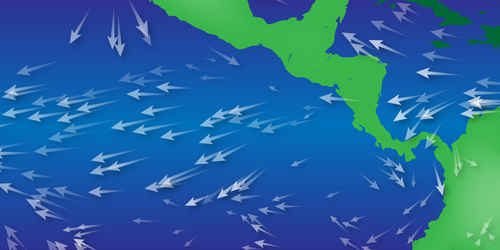A Missing Beat in Earth’s Oscillating Wind Patterns
Like clockwork, the winds flowing over Earth’s equator switch direction every 28 months. Known as the quasibiennial oscillation (QBO), this switch has been observed in measurements of the stratosphere—the region of the atmosphere that extends from 20 to 50 km above Earth’s surface—dating back to the early 1950s. But in 2016, the pattern skipped a beat. Antoine Renaud of the French National Center for Scientific Research (CNRS) at the University of Lyon and colleagues now propose a possible explanation for this unexpected behavior. Their model could be used to understand the dynamics of atmospheres on other planets, such as Saturn, which exhibit similar oscillations in their wind patterns.
The QBO occurs in a region of the stratosphere that spans from the bottom of Peru to the top of El Salvador (15 degrees north and south of the equator). The wind switches direction first in the upper levels of the stratosphere, with the switch then slowly descending through the atmosphere over a period of months before halting at the bottom of the stratosphere (the tropopause), around 17 km above Earth’s surface. But the expected 2016 switch never occurred.
To explain the anomaly, Renaud and colleagues built a realistic model of the stratosphere as a stratified fluid that was cold and heavy at the bottom and hot and light at the top. They perturbed the bottom boundary of the fluid by introducing an oscillatory wave at the tropopause and then looked for effects on the fluid’s flow direction. As they increased the strength of the wave, they observed the naturally occurring 28-month oscillation transition from periodic to chaotic. Whether Earth’s atmosphere is close to such a chaotic regime remains unknown. And, the team says, there is strong debate as to what might have caused the 2016 QBO disruption.
This research is published in Physical Review Letters.
–Katherine Wright
Katherine Wright is a Senior Editor of Physics.





